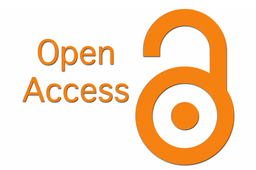9 Finding and Documenting Research Sources
Chapter Objectives
Students will:
- Strategically find research sources using Google and college library resources.
- Conduct an interview effectively.
- Accurately document sources through written and spoken citations.
In the previous chapter, you learned how to prepare to conduct credible research. That chapter talked about adopting a research mindset, recognizing differences across sources, and evaluating the value of sources. Keep those skills in mind as you read this chapter, which will help you shift from preparing to finding and documenting research sources.
Because most students use Google to find sources, this chapter will provide tips to make your efforts more fruitful. We will follow that with the encouragement to also explore the resources available through your college or local library. Then the chapter will explore interviews as a means of creating sources. We will give you tools to contact someone to interview, prepare for the interview, and conduct the interview. Finally, the chapter will end by explaining the importance of documenting your sources and providing guidance for how to do so for a variety of sources. But first we’ll begin with a note about using artificial intelligence (AI) chatbots to find research sources.
Using Artificial Intelligence Chatbots to Find Research Sources

As AI becomes more popular and powerful, students increasingly turn to chatbots for their research. We clarified in the previous chapter that AI is itself not a source but is more of a robust compiler of sources. We defined a compiler as a service that gathers information from multiple sources and makes it available.
As you probably already know, among the information that an AI chatbot can compile are research sources. If you ask ChatGPT for “a list of specific sources about excessive waste management,” for example, it will provide five or so. The ease and efficiency of this service is terrific, but be careful! AI chatbots can “hallucinate,” or make up, sources that do not exist.
“In addition to potentially providing false information, ChatGPT can produce legitimate looking reference citations for materials that don’t exist.”[1]
Box 9.1 AI Hallucinates Research Sources
When we asked for specific sources about excessive waste, most of what ChatGPT provided did not exist.
- It named The Waste Land: A History of Waste Management by Elizabeth A. M. McKenzie, published by Routledge in 2019, but that full title does not appear on Routledge’s site, Amazon, or Google Scholar.
- Similarly, ChatGPT listed a scholarly article by John Smith titled “Excessive Waste: A Global Perspective” and published in 2021 in the Journal of Environmental Studies, volume 34, issue 2. This journal does exist, but its volume 34 was published in 2024 (not 2021), that volume only consists of issue number 1 (so there is no issue 2), and John Smith does not appear in the journal’s list of authors published.
Others have run into similar problems with AI chatbots hallucinating research sources.[2]
AI chatbots will get smarter with time and therefore should offer more accurate references and hallucinate less. Nonetheless, if you choose to use an AI chatbot to find research sources, it will always be your responsibility to (1) make sure the sources provided actually exist and (2) find the sources and read them. Recall from the previous chapter that research is the process of learning about a topic by discovering what credible sources have said, written, or recorded about it. Finding and documenting sources are means toward the end of that learning, not ends in themselves.
Finding Research Sources with Google
In addition to AI chatbots, you probably also turn to Google to conduct research. Tech companies such as Google have incorporated AI into their products, including their search engines, making a distinction between Google and AI somewhat futile. For our purposes, however, when we refer to Google, we mean the more traditional search engine as opposed to AI chatbots like ChatGPT and Gemini.
Fortunately, search engines like Google can often meet your research needs, especially for an introductory-level class.[3] To help you, we will briefly discuss domain labels, open access resources, specialized search engines, and advanced searches.
Domain Labels
When deciding which Google search results to use, consider domain labels. The top-level domain name appears after the dot of a web address. Use the domain name to decide which search results are more likely to be of high quality, such as the following:
| .edu | US postsecondary educational institution | willamette.edu, usc.edu |
| .gov | US government entity | whitehouse.gov, senate.gov |
| .mil | US military organization | army.mil, health.mil |
| .org | Noncommercial organization, such as a charity or nonprofit organization | habitat.org, redcross.org |
Information from any of these domain labels is less likely to be used to sell you a service or product. In contrast, the .com domain name refers to a business with explicitly commercial motivations, such as exxonmobil.com or walmart.com.
Of course, websites with the domain labels listed here may still offer biased information. As we discussed in the previous chapter, bias does not mean you should not use the source, but it does mean you should be aware of the bias and honest with your audience when citing the source.
For domain labels, also notice that the examples are for US websites. Other countries issue domain names as well, and when they do, they include a country code at the end of the website address. For instance, all website addresses that end with .uk, such as parliament.uk, refer to domain names issued by the United Kingdom. So that is worth keeping in mind as you process the information provided.
Open Access Resources

Another savvy way to find higher-quality research on Google is to look for open access (OA) materials in your search results. According to Anita Walz, “Open access items are always free to read. Unless printed, they are always online, and never require passwords, log-in credentials, payments, or access restrictions to read.”[4] They typically do not include advertisements either. OA materials most frequently appear as scholarly books and articles, typically making them more credible, thoughtful, and in-depth than other types of digital resources.
Box 9.2 Finding Open Access Research Sources
There is no single “OA” website to search. Instead, there are many online repositories of OA materials.
- If you want to find books, you might begin by using the Directory of Open Access Books or the Online Library of Open Access Books.
- If you want to find journals or articles, you might start with the Directory of Open Access Journals.
Specialized Searches
In addition to considering domain labels and finding open access resources, you can also take advantage of the specialized search options that search engines like Google offer. These options only show websites that fit the specific category chosen. For instance, Google currently offers search engines devoted to news, scholarship (Google Scholar), patents, finances, trends, books, and images. Once you have chosen your specialized search engine (say, Google Scholar), type in your search terms knowing you will only retrieve sources directly relevant to the type of specialized search you selected.
Advanced Searches
 A final way you can smartly use Google is by using its Advanced Search options. The exact location of the Advanced Search page changes, but it is typically part of Settings, or you can search on Google for “Advanced Search” or go directly to google.com/advanced_search. Once there, you will find a wide range of options, including
A final way you can smartly use Google is by using its Advanced Search options. The exact location of the Advanced Search page changes, but it is typically part of Settings, or you can search on Google for “Advanced Search” or go directly to google.com/advanced_search. Once there, you will find a wide range of options, including
- searching for sources with precise phrases or ranges of numbers,
- ensuring particular words are not included in the findings,
- narrowing sources to those updated within a given time period (past twenty-four hours, past week, etc.),
- searching only specific types of domain labels or sites, and
- many more.
While all the advanced options can be incredibly useful, we draw your attention to conducting a site- or domain-specific search. This type of search limits your research results to matches found only on one particular website or domain label. A site-specific search—like all the Advanced Search tools—is a helpful way to both harness the power of a search engine like Google and focus your search.
Box 9.3 Using a Site-Specific (Advanced) Search
Let’s say you want recent information about landfills, but only data published on the Environmental Protection Agency (EPA) web pages. In that case, you would simply
- go to google.com/advanced_search
- on the Advanced Search page, type your search term: “landfill”; and
- then find the prompt for “site or domain” and type “epa.gov.”
Every result listed will include epa.gov in its web address. Alternatively, you can search only for a particular domain label, such as .org websites.
Limitations with Using Google
Be aware of Google’s limitations as a place to search for sources: The results range in quality, paywalls can stop you from accessing materials, and you might mistake the results from an incorporated AI chatbot for search engine results.
 First, the quality of Google’s findings can range dramatically, and the order in which findings are listed does not correspond to their quality. Don’t assume the best research materials will appear at the top or that the best resources can necessarily be found through Google. Even using the tips provided, you are more assured of high quality if you search through your library’s website.
First, the quality of Google’s findings can range dramatically, and the order in which findings are listed does not correspond to their quality. Don’t assume the best research materials will appear at the top or that the best resources can necessarily be found through Google. Even using the tips provided, you are more assured of high quality if you search through your library’s website.
Second, despite the proliferation of OA materials, you can quickly run into paywalls that prevent you from accessing the sources you need unless you pay. Your university library website, in contrast, likely provides full free access if you are a student, or you can often request free materials through an interlibrary loan. Thus, you likely should never have to pay to access a source yourself. If you hit a paywall, then turn to your university library’s website for free access. If you cannot find the resource there, ask a librarian or your instructor for help, or request the material through an interlibrary loan.
Finally, AI chatbots are increasingly built into search engines, including Google. Although chatbot results are typically separated from search engine results visually and/or through labeling, if you are not careful, you might mistake the results for sources produced by the search engine.
Consequently, we strongly recommend that you access sources in more than one place when searching for sources. If you begin with Google, don’t end there. Also explore what your campus library’s website and professional librarians have to offer.
Finding Research Sources Through Your Library
As a college or university student, you likely already pay (in your tuition or school fees) for library resources, both online and in person. It’s smart, then, to make use of those resources! We will comment briefly on especially helpful online library resources and the types of in-person guidance your librarians can likely provide you.
Research Databases for Subject-Specific Sources
Among the most useful library resources you can find through your college library’s website are research databases. In the previous chapter, we defined a research database as an organized online storehouse of information that can easily be searched to retrieve desired sources. We listed the various types of sources you can access through such databases.
Here we’ll add that you can conduct subject-specific searches by targeting specific, relevant databases. For example, if your speech topic concerns community spaces, you might find Art and Architecture Complete especially useful. If, instead, you need to learn about vaccines, then MEDLINE could prove useful. Your library may not subscribe to these exact examples of databases. The point is for you to find and make use of the subject-specific databases your college library does have through its website. Libraries often have subject-specific research guides that will suggest which databases are most relevant to given subjects. They are generally aligned with majors and minors offered at the institution.
Local News Sources

Your library also likely provides free digital access to a variety of local news sources, such as your university’s newspaper, your local town newspaper, the newspaper of one or more major cities in your state, and one or more national newspapers (such as The New York Times or Wall Street Journal). Your library likely offers both archival and ongoing access to such news sources. If you choose a topic that is particularly localized, you may find searches in one or more of these news sources handy.
Professional Guidance

Don’t forget about your university’s librarians themselves! They are paid professionals who are trained to help you find appropriate resources. Find out when one is available and make an appointment or drop by! Not only might you get help locating useful sources, but you are likely to also pick up several more tips on how to search effectively.
Choosing Your Search Language
Whether you search for sources on Google or your library’s website, choose your search language thoughtfully. If your first search terms do not result in what you want, think of synonyms and try those. Persist, despite frustrations. Online search success comes partly from discovering the right words to use to produce sources that help you learn, focus your topic, and educate your community in turn. If you are striking out, go back and read background information about your topic. Background reading involves reference sources such as encyclopedias and dictionaries. These sources tend to reflect information and concepts that are consensually agreed to by a wide variety of parties. Consequently, you can look for what words or phrases those sources use and try them in a search.
So far we have mostly discussed accessing sources online, sometimes with the help of librarians. Next we turn to another way to find sources: through interviews.
Interviews

You might not immediately think of interviews when researching a topic. Yet people can be some of your best sources! Interviewing them enables you to solicit the precise kinds of information, opinions, or experiences most useful to crafting your speech. In the process, you can form a new community relationship.
Setting up and conducting an interview may seem like a daunting task. Who should you contact? What might you ask? Fortunately, by following a few simple guidelines, interviewing can be a relatively easy and fun endeavor.
Making a Contact
Begin by deciding what kind of person might be most helpful to talk to about your topic. Consider, for example, where they might be located. We stress the value of initiating a local interview. Certainly, interviewing someone internationally or nationally can provide very useful  information and input. But part of becoming involved in your community involves learning who the local experts are. Whether you live in a small town or urban setting, you can find people nearby who can convey the local impact of the issue you are studying, even when it is global in scope. They may also provide possible solutions your community might adopt to improve it.
information and input. But part of becoming involved in your community involves learning who the local experts are. Whether you live in a small town or urban setting, you can find people nearby who can convey the local impact of the issue you are studying, even when it is global in scope. They may also provide possible solutions your community might adopt to improve it.
To find a local person to interview, research your area. Ask local community members (nonprofit organization participants, teachers, coaches, religious leaders, and so on) for suggestions, search online for relevant groups and organizations, or visit your local library. Once you have chosen a person to interview, make an initial connection. We recommend the following:
- Introduce yourself and your project.
- Tell them why you want to talk to them. For instance, explain you would like input to help develop your speech, and be clear and specific about the subject matter you want to discuss. This allows the interviewee to reflect on the topic in advance and, if appropriate, to review and collect relevant information to share with you.
- Estimate the amount of time you anticipate the interview will take (thirty minutes? one hour?) so the interviewee can account for that when scheduling the interview.
- Set up a day and time to conduct the interview. Don’t assume an interviewee has time at that moment or when it is most convenient for you.
- Clarify their preferred means of communication (via videoconference, phone, or email or in person).
Preparing for the Interview
Prepare for the interview by carefully crafting your questions. Keep your questions specific but open-ended and neutral. Consider what types of information you are seeking and write your questions accordingly, using box 9.4 for guidance. Be prepared to ask follow-up questions. End the interview by allowing the respondent to offer additional thoughts.
Box 9.4 Asking Questions to Gain Different Types of Information
When writing and asking questions, consider the kind of information you’d like to learn from the person you are interviewing.
- If you want factual information, ask for the exact data and facts you need. You might also tactfully request how the person knows these facts or from whom or where the information comes. If the interviewee references a report or study, for instance, ask where you might find a copy.
- If you want information about the person’s experiences, ask how they have been affected by the topic or what a typical day at work or at the organization they belong to looks like. Or you might request the interviewee to relate their most vivid memories associated with your topic.
- If you want to learn the person’s opinions or feelings, explicitly invite a perspective on or response to an opinion or policy proposal you’ve read or heard.
- If you want the person’s ideas for local actions community members can take to help improve the issue you’re researching, simply ask what local people, including college students, can do to help address or solve the problem. If the person is part of an organization devoted to the issue you’re exploring, you might ask how local community members can aid their organization—what needs or opportunities it currently has—and get all the necessary details to relay to your peers if you choose to advocate one of these options.
Conducting the Interview
Having made a contact and prepared your questions, you are ready to conduct the interview. Follow a few simple guidelines to help ensure an enjoyable and productive exchange:
- Be punctual for your scheduled time if your interview is by videoconference, phone, or in person.
- Reintroduce yourself and remind the respondent why you asked for the interview.
- Ask your questions one at a time.
- Either take great notes during the interview or ask permission to record the interview. Don’t count on your memory to recall their answers. Recognize that some people may feel uncomfortable being recorded.
- Make clear to the interviewee how you will use the information provided and verify you have permission to use their input and quote them. Sometimes people will share information with you off the record or will not want some ideas attributed to them. You need to respect their wishes.
- Thank the person for taking time to talk with you.
- Keep an eye on the time. Stick to the amount of time you estimated when scheduling the interview. If you come to the end of that time and wish to continue, ask if the person can answer one or two more questions. Provide the option of ending the interview in case they cannot linger.
- When you leave, spend time immediately going over your notes. Make sure you note the date of the interview and the name and title of the person you interviewed.
- Give the person the option to review any quotations you plan to use from the interview for accuracy.
By following this guidance, you should enjoy a very positive interviewing experience. Your exchange will likely provide helpful information and opinions for your speech. And you will probably feel more closely joined to your community afterward because you connected with another member.
Source Documentation
Once you have found strong sources for your topic—whether through Google, your college library, or interviews—how do you properly and effectively credit them in your speech? We next answer this question by considering how to document your sources during a speech and in an associated bibliography. We will begin by explaining the importance of source documentation.
Better Safe Than Sorry
Whenever you get ideas from, directly quote, paraphrase, or summarize content from another source, cite your source. A citation provides a source’s basic identifying information, such as the four W’s we discuss in “What to Cite: The Four W’s.” As we encouraged in chapter 5, when in doubt, cite.
Citing your sources strengthens your credibility because it reflects your competence (you did your homework) and trustworthiness (you are making clear what sources you consulted). In contrast, passing off someone else’s ideas as your own (i.e., not citing your sources) is an act of academic dishonesty and plagiarism. As chapter 5’s discussion of ethics made clear, it is unethical to take credit for other people’s ideas or work. You will lose your audience’s and instructor’s trust. Furthermore, not citing your sources makes it more difficult for your audience to learn more about your topic and take action. By citing your sources, you provide them with a path forward to further education and advocacy.
Written and Spoken Citations

When preparing a public speech, keep in mind two types of citations: written and spoken. Written citations are written down, typically in the form of a bibliography (perhaps called a Works Cited or References)—much like you might provide with an essay you have written. Your instructor may require you to submit a written bibliography with your speech outline or manuscript. Alternatively, you may choose to provide your bibliography to a community group you are addressing so they can further pursue the topic you discuss.
Written citations should follow a style guide, or instructions for writing and formatting sources. Modern Language Association (MLA) and the American Psychological Association (APA) both author style guides. Ask your instructor what style guide they prefer and consult Purdue University’s Online Writing Lab (known as “Purdue OWL”) for help following it. Your library likely has access to both print and online style guides, and your reference librarians can help you with citation questions. Alternatively, free software such as Zotero may prove useful.
Speakers should also use spoken citations, because audiences don’t typically receive or read a bibliography, or they don’t see it (such as on a concluding visual aid) until after the speech is over. Consequently, speakers should use spoken citations, which are vocalized during the speech. They can be integrated anywhere into a speech: as part of the attention-getter, to establish the problem, to make a viable solution compelling, and so on. Wherever you include them, say the spoken citation prior to summarizing, paraphrasing, or quoting the source. Announcing the source first allows the audience to evaluate the information in light of its source.
What to Cite: The Four W’s
While specific requirements differ based on the exact type of source, most written and spoken citations need you to answer the four W’s: who, where, when, and what.
- Who created the source? That is, who is the author of the article, post, or book, or who did you interview?
- Where was it published? What is the title of the journal or website, for instance, where the article or blog can be found? Alternatively, how did you conduct the interview (by email or in person)?
- When was the source published or made available, or when did you talk with your interview subject?
Answering the three questions of “who,” “where,” and “when” is sufficient for a spoken citation, but a fourth question—“what”—may also be necessary for a written citation in a bibliography.
- What is the name of the source? In other words, what is the title of the article, book chapter, or post? This is more specific than the publication (“where”).
Box 9.5 Examples of Citing the Four W’s

Notice the use of the words “quote” and “unquote” to orally indicate where the source’s direct language begins and ends.

Notice both citations answer who, where, and when. Only the written citation additionally answers what and provides a URL (if relevant). Neither of these are included in a spoken citation.
But What About Citing…?
A few situations are a little tricky to know when and how to cite, so we address them here. Specifically, we address citing the use of AI, open access sources, and sources used to produce visual aids.
Citing the Use of Artificial Intelligence Tools
We established that artificial intelligence (AI) is not a source but a compiler of information and sources—and that the sources a chatbot offers may or may not actually exist. However, we also recognized there are valuable uses for AI in developing a speech, such as brainstorming arguments and restating complex ideas more simply. If you make use of AI in any way, you should cite it. That means if you paraphrase, summarize, or quote text produced by AI or if you use AI to generate ideas, translate language, edit your work (including your word choices or grammar), or for any other task, you should make that clear in your written citations. You can use box 9.6 for citation guidance, but please check with your instructor as well as style guides, as norms are rapidly evolving.
Box 9.6 Citing the Use of AI Tools
To cite your use of AI, you should name the following elements in a written citation (not necessarily in this order):
- the AI tool and version you used (e.g., ChatGPT 4.5, Gemini 2.5 Pro, DALL-E 3.0),
- the company who made the tool (e.g., OpenAI, Google),
- the date you used the tool,
- what you used it for or what you asked it to do, and
- a URL to the tool.
For example, “Provide a list of harms caused by excessive waste” prompt. ChatGPT 4.5, OpenAI, 17 April 2025, https://chatgpt.com/.
In a spoken citation, you only name the AI tool and version you used (what) and company who made the tool (who). For example, ‘As you can see in this list of harms generated by Open AI’s ChatGPT 4.5 . . .’
Before following this model, check with your instructor as well as style guides for current recommendations.
Citing Open Access and Creative Commons Sources

Other potentially difficult types of sources are open access and Creative Commons. As we explained earlier, open access refers to online sources that are available without the need to pay, either directly or via a library, and generally do not include advertisements. Typically, open access sources will designate a Creative Commons license to guide how they can be used or mixed into new work. For example, CC-BY is a license that indicates you can use the work for any purpose as long as you credit the creator, whereas CC-BY-NC-ND means that you must give credit to the creator, may only use the work for noncommercial purposes, and cannot modify the work.
What this means is that you need to cite any open access materials you use (in addition to complying with any requirements dictated by their Creative Commons license) if you summarize, paraphrase, or quote them. Depending on what kind of open access material you use and how you use it, you may need a written citation, a spoken citation, or both. Ask your instructor for specific guidance.
Box 9.7 Citing Open Access Materials with Creative Commons Licenses
To provide a written citation of Creative Commons material, follow the TASL Method developed by the creators of Creative Commons licenses. That means your citation should identify the following:
Title: If the written or visual material has a title, identify it. If not, ignore this.
Author: Name the author (licensor) of the material, using the way they name themselves. Link to the author’s profile page, if available.
Source: Identify where the material can be found and link to it.
License: Name the specific Creative Commons license and link to it.
For example, the picture in the next section of a person pointing at a visual aid could be cited this way in a written citation: “Whiteboard” by sumarni at the noun project, CC–BY 3.0.
In a spoken citation, you would only need to include the author (who) and source (what). For example, ‘In this picture by sumarni at the noun project . . .’
There is no one way to communicate the TASL information. We recommend you consult a style guide and your instructor for specific preferences.
Citing Sources Used to Make Visual Aids
 Finally, it can be difficult to know how to best cite sources you draw on to produce visual aids for your speech. As we will discuss in chapter 29, your visual aids might include a video clip you find, or they may visually display data, examples, photographs, or even testimony you discover from outside sources. Alternatively, you might create a visual aid using an AI tool such as DALL-E.
Finally, it can be difficult to know how to best cite sources you draw on to produce visual aids for your speech. As we will discuss in chapter 29, your visual aids might include a video clip you find, or they may visually display data, examples, photographs, or even testimony you discover from outside sources. Alternatively, you might create a visual aid using an AI tool such as DALL-E.
You can incorporate into your speech a spoken citation of the source or AI tool you used as you talk through the information or imagery shown. In most cases, however, you will likely prefer the less disruptive option of a written citation. In either case, we recommend you include written citations at the end of the slide deck or video (as a bibliography or credit page) or on the visual slide itself or in the video as it plays. If you choose to include a written citation on the slide or in the video, use a small font and a low positioning of the citation so it does not compete for the audience’s attention. As always, include the four W’s (and follow a style guide) or use the guidance provided in “Citing the Use of Artificial Intelligence Tools” and “Citing Open Access and Creative Commons Sources.” Including a written citation builds your credibility by giving credit to the source who created the image or video or produced the information you are using.
When you document your sources, both when speaking and in writing, you follow the best practices of excellent speakers. You can feel pleased by how well you discovered, learned from, and utilized strong and diverse sources for your speech.
Summary
This chapter has offered you specific techniques to find and document research sources.
- AI chatbots currently too often hallucinate research sources to be useful research tools. Even as these tools improve, speakers should always ensure the sources provided to a prompt actually exist and then find and read the information they offer.
- There are smarter ways to search Google than to simply type in search terms. We recommend you consider domain labels and open educational resources and use site-specific searches as well as specialized search engines.
- Make use of the resources provided by your library if you are a college or university student. They include such helpful online resources as research databases and news sources as well as in-person guidance from librarians.
- Conducting an interview is an excellent way to ascertain people’s opinions and experiences related to your topic. To ensure an interview is effective, you should follow basic instructions on how to make a contact, prepare for the interview, and conduct the interview.
- Ethical speakers give credit to all their sources through spoken and written citations.
Key Terms
citation
hallucinate
spoken citation
style guide
written citation
Review Questions
- What are the differences between a specialized Google search, a site-specific search, and a domain label?
- What is a research database, and why might it be valuable when researching?
- When conducting an interview, what should you make sure to do or not do?
- What should you include in a spoken citation for a source? In a written citation?
Discussion Questions
- Try searching for a topic using a basic Google search. Then try searching for the same topic on a specialized Google search or an online database. How do the results compare? What did you learn in the process?
- Which databases and news sources do you have access to through your library’s website? How have you used databases or news sources in the past?
- Who might you interview for an upcoming assignment? How could you research your local area to find a group or individual relevant to your topic? What questions might you ask?
- Which types of sources are the strongest in your opinion? Why?
- “Don’t Get Ghosted: Beware of ChatGPT Generated Citations,” Los Alamos National Laboratory Research Library, https://researchlibrary.lanl.gov/posts/beware-of-chat-gpt-generated-citations/, archived June 30, 2025, at https://web.archive.org/web/20250630180533/https://researchlibrary.lanl.gov/posts/beware-of-chat-gpt-generated-citations/. ↵
- “Don’t Get Ghosted.”; Robin Emsley, “ChatGPT: These Are Not Hallucinations—They Are Fabrications and Falsifications,” Schizophrenia 9, no. 52 (2023), https://doi.org/10.1038/s41537-023-00379-4. ↵
- Maureen Richards, “Is ‘Just Googling It’ Good Enough for First-Year Students?,” College & Undergraduate Libraries 28, no. 1 (2021): 85–104, https://doi.org/10.1080/10691316.2021.1894295. ↵
- Anita R. Walz, "Differentiating Between Open Access and Open Educational Resources," VTech Works, October 19, 2019, http://hdl.handle.net/10919/94422.2. ↵

